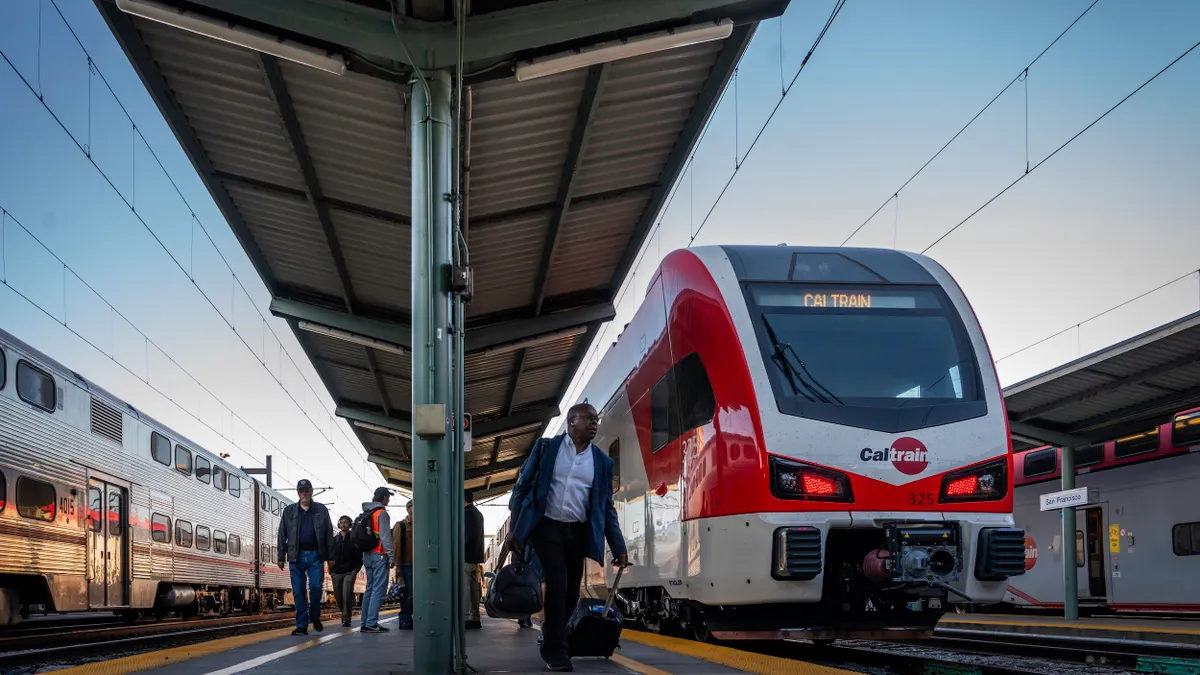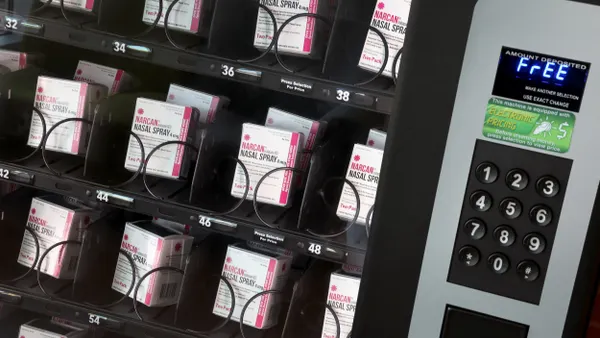Dive Brief:
- Caltrain, the commuter railroad that serves the San Francisco Peninsula, saw ridership surge nearly 47% fiscal year over year since it replaced diesel-powered trains with electric trains, according to a Sept. 22 news release.
- July 2025 saw ridership increase 78% compared to the same month the year prior, the second consecutive month it carried over one million riders.
- Electrification reduced travel times, enabled more frequent train service and increased overall capacity on the system by 30%.
Dive Insight:
“We are blessed to have launched our electrification program,” Caltrain Executive Director Michelle Bouchard said in an interview. It was a long process, she said, dating back to a 1996 policy commitment to electrify the railroad.
The project got underway in 2016 with the awarding of the first contract. It required installing overhead catenary wire along 51 miles of the route along with procuring 23 seven-car electric train sets from Stadler and upgrades to Caltrain’s central maintenance facility.
The total cost of the project came in at $2.72 billion, including implementation of the federally-required safety technology known as positive train control. The San Francisco County Transportation Authority contributed $41 million from its half-cent sales tax for transportation and the One Bay Area Grant program.
For Bouchard, the project was essential to reimaging the purpose of a commuter railroad in the aftermath of the COVID-19 pandemic that sent ridership plummeting as many daily commuters worked from home. “This is an opportunity to recast ourselves as not just a railroad for one single purpose,” she said.
With electrification, Caltrain doubled weekend service and ensured that at least one train in each direction serves every station every thirty minutes or less. The project also delivered environmental benefits, with its electric trains returning 23% of their energy to other trains or the grid through new regenerative braking technology.
“The last five years have presented the commuter rail industry with what seems like adversity, but I see opportunity in it,” Bouchard said. “The service we're providing is critical, not only to our customers, but to the economy.”












